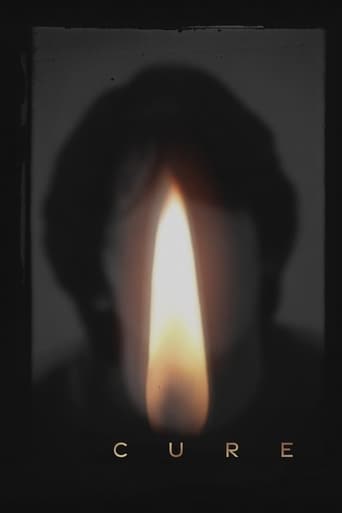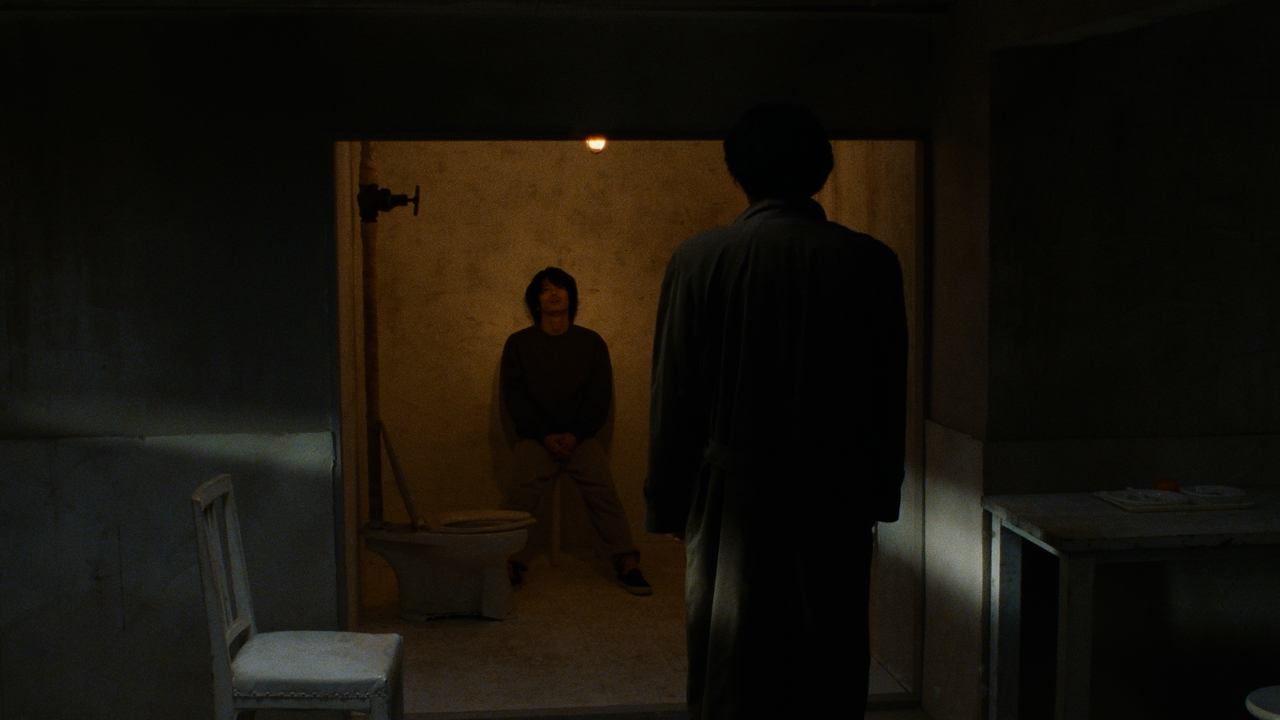Robyn Nesbitt (nesfilmreviews)
Director Kiyoshi Kurosawa constructs a captivating, complex universe in "Cure," and one that cannot be reduced to simple answers and established truths. On the surface, Kurosawa has seemingly constructed your standard procedural police thriller, but as the story slowly unfolds, it develops into a fascinating, perplexing psychological mystery. From the startlingly violent opening sequence, it's clear we're in the hands of a gifted director in complete control of his medium, and who focuses on heightening the senses to create an atmosphere of trepidation. Kurosawa pulls his story in the opposite direction of a typical detective story, and brilliantly turns a routine thriller into a vehicle of social criticism.The first half of "Cure" unfolds as a police-procedural. A wave of gruesome murders is sweeping Tokyo, and the only connection between them is a bloody X carved into the neck of each of the victims. A variety of unlikely killers are responsible for the slayings, all of whom have encountered a disoriented young man named Kunio Mamiya, played by Masato Hagiwara. He possesses a hypnotic effect on people, but has no apparent memory of it. His lack of memory appears contagious, and the eventual killers succumb to it as well. Detective Takabe picks up bits and pieces about hypnotic suggestion, a theory he tosses out early in the film, and it is also rejected by his psychiatrist friend, Makoto Sakuma (Tsuyoshi Ujiki). The trail of dead bodies, however, eventually leads to Mamiya, who's been held in a mental hospital.The second half of the film involves Takabe dealing with his own emotional issues, and his wife who has a deteriorating mental condition, whose symptoms include an inability to recall recent events, and in this way she and Mamiya appear quite similar. This increases Takabe's frustration with Mamiya, as the boy's refusal to respond to simple requests reminds him all to well of the issues at home. Takabe would most likely be Mamiya's next victim, however, he does have one advantage that Mamiya's other victims didn't: his growing knowledge of Mamiya's abilities.Just as Mamiya is hypnotically manipulating his prey, Kurosawa is also skillfully manipulating the audience, taking us into a world of uncertainty, and a slow descent into pure madness. Kiyoshi Kurosawa deserves credit for his unique visual approach, and his evasive approach to storytelling. He establishes a pervasive sense of detachment by utilizing barren landscapes, and filming scenes with isolated frames. Almost no music is present during the movie, adding to the feel of extreme isolation, and instead amplified everyday sounds create the tension.Inevitably, the indefinable cure for the unconscionable murders serves as a tragic allegory for the emotional disconnect of our society. The film eerily presents the impersonal nature of our contemporary existence with extraordinary direction. Mr. Kurosawa constructs an elaborate psychological labyrinth, and then strands us in the middle of it, with no definitive way out. A master of disquiet, Kurosawa touches on the forbidden zones of our existence, exploring the unseen, and probing the unspeakable.
MarieGabrielle
Detective Takabe (Koji Yakusho) is called upon to solve a group of inexplicable murders.The sights and sounds of this film encompass an odd sense of foreboding and despair. I watched this DVD four separate times as it had such an effect, as did several of the performances.Takabe is saddled with the additional burden of a wife with emotional problems, she has an amnesia of sorts and also is at times depressed. We see his frustration as he comes home from a long days work merely hoping to engage in conversation with her.There is a young man roaming the city who is eventually hospitalized, who incites various people to act out, or kill in a ritualistic fashion. It comes to bear that Mahimi was at one time a medical student studying the occult and hypnotism as taught by Austrian "occultist" Anton Mesmer ("Mesmerism").In Japan it is revealed this technique was called "soul conjuring" and suppressed by the Meiji Government during the late 1800's. The events unravel in a domino effect, taking you into a bizarre scenario.Overall this is an excellent film with good performances, do not mind the subtitles. I will be looking for other films by this director as well. Excellent suspense here, in American film we do not have similar, except maybe for Hitchcock. 10/10.
ebiros2
Koji Yakusho stars as detective on the tail of a murderer who uses other to do his deeds.Mysterious killing is going around Tokyo, the method are similar but the suspects are all from different walks of life. Detective Takabe (Koji Yakusho) is on the tail of the suspect who he suspects is using hypnosis to make others kill. Him and his psychologist friend Sakuma begin to profile the suspect. Investigation reveals that the suspect used to be a psychology student and was studying about Mesmer.Koji Yakusho won the 10th Tokyo Movie Festival Male Lead award with this movie, and has become a regular in director Kiyoshi Kurosawa's movies since then.The movie has no punctuation point which makes it weak. There's only gruesome killing and unusual suspect to carry the whole story. There is nothing behind the motive, or why the suspect became what he is. This makes the movie fizzle without a bang that should have been there for such a mystery. A very dark movie that could have been lot better if the motive and the cause was better fleshed out.
poikkeus
I saw CURE at the San Francisco Film Festival in around 1998, and like many, I found the concept and craftsmanship arresting. A number of audience members stayed around afterwards to discuss it - it's a psychologically complex tale of hypnotism and the seductions of altered consciousness. Koji Yakusho (DORA HEITA, 13 ASSSASSINS, etc.) is at his acting peak as a detective who tries to solve a series of murders that don't seem to relate to common logic.Recently, I saw the DVD version of the film - and it's clear that the film had been cut severely. Most viewers have only seen the US DVD version, so they're not even aware of the problem. A few of the more graphic sequences were cut, important portions of the narrative set in an old sanatorium were excised, and the violent finish was excised entirely. (The US DVD concludes with the suggestion of a further killing; the theatrical Japanese version is more powerful and unambiguous.) In some cases, a later, recut version may be better than the original; however, that's not the case here. There's scant online text relating to the differences between the two versions. It speaks well for director Kiyoshi Kurosawa that he took a low-budget police procedural and made an innovative thriller out of it. Most of the scenes are under-edited and shot at a distance, to extract the most from the hypnotic storyline; the longer, hypnotic sequences are several minutes long, with no edits. Because the film uses medium-distance shots to give a sense of hypnotic disassociation, viewers with larger screens will gain an advantage.I strongly recommend seeing it - but would suggest you seek out the original, uncut theatrical print if you can. The differences are striking. I'd rate the original print as 10/10; the cut/domestic DVD is maybe 7/10. This film would profit from a Criterion reissue, but that doesn't seem to be in the works.


 AD
AD



